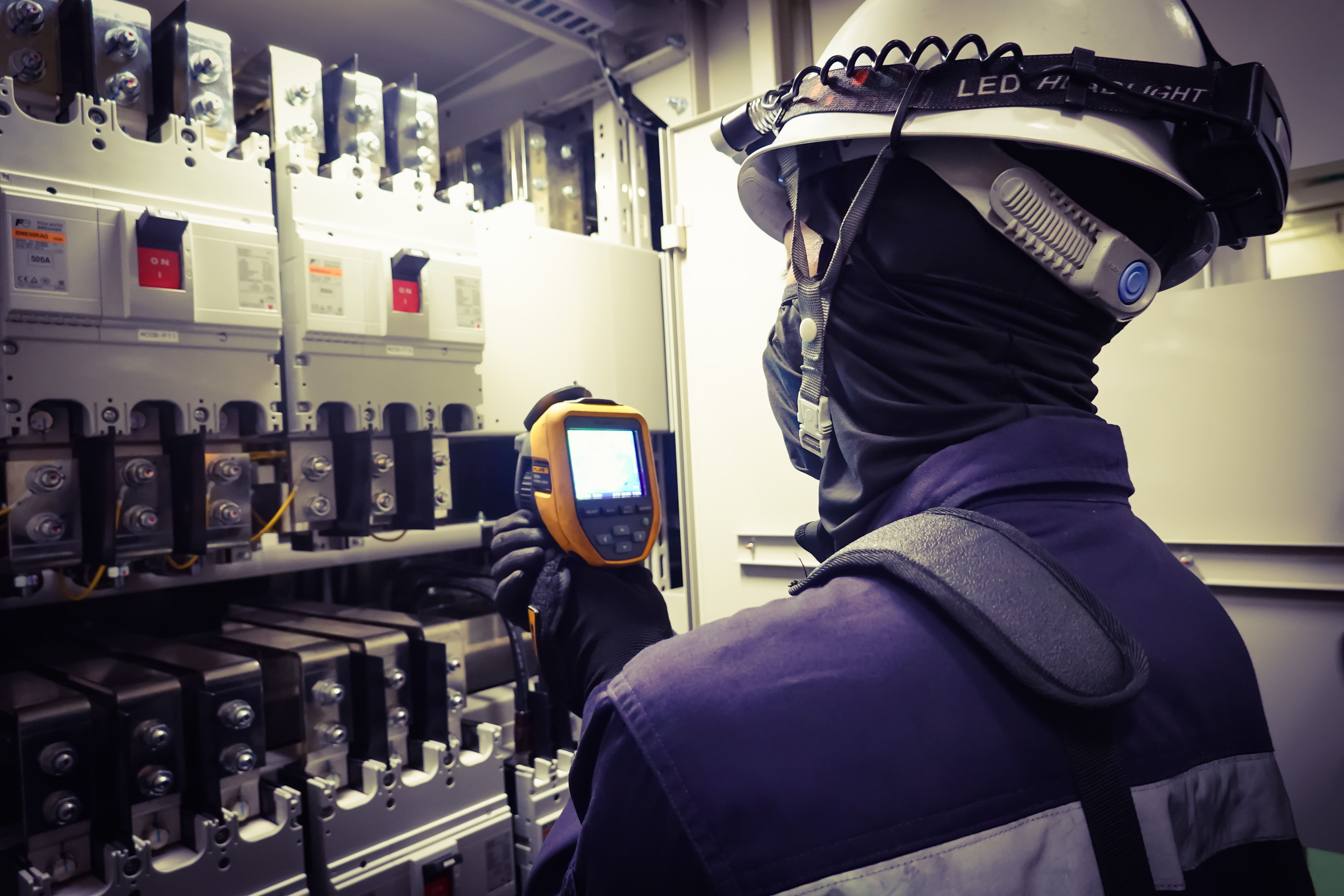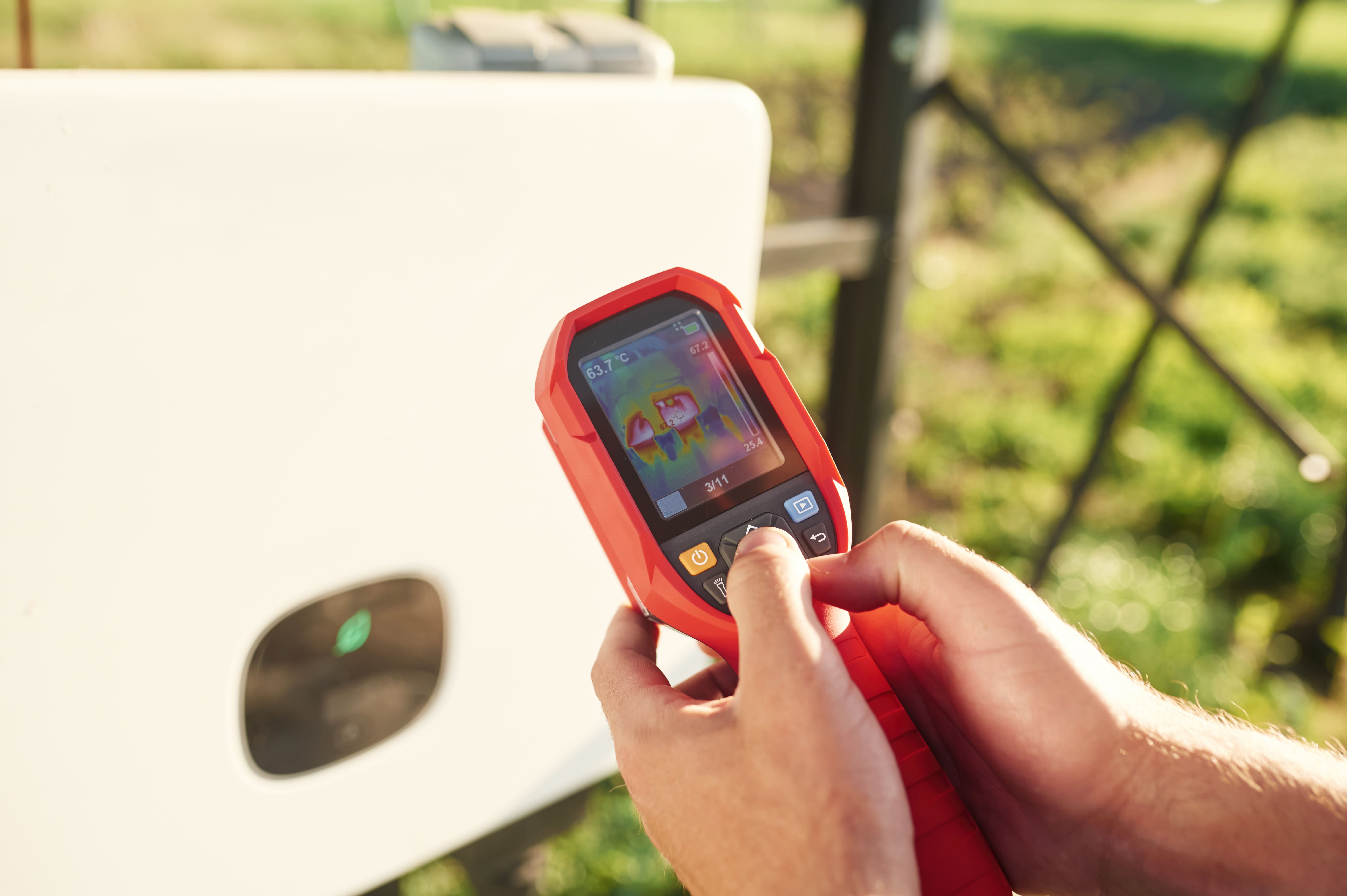- Published 8 Feb 2024
- Last Modified 8 Feb 2024
- 7 min
How Thermal Imaging Cameras Can Be Used for Building Inspections
Discover how thermal imaging works. Explore how thermal imaging cameras aid in early leak detection and identifying issues during building inspections.

Regular building inspections are essential for maintaining the structural integrity, safety and quality of both residential and commercial properties. These assessments are crucial for identifying potential hazards, diagnosing existing problems, and determining necessary rectifications to ensure the well-being of occupants and visitors.
A vital tool in the arsenal of a building inspector is the thermal imaging camera. Their ability to detect and interpret temperature differences makes them invaluable for identifying problems that are not immediately apparent, providing a detailed view of a building’s condition that surpasses traditional physical inspections.
Let’s explore how thermal imaging works and its utility in building inspections.

What is Thermal Imaging and How Does it Work?
Thermal imaging uses infrared technology to visualise temperature differences in objects and spaces, creating an image based on the heat emitted by various materials. Every material with a temperature above zero emits a unique infrared radiation signature, which is invisible to the naked eye. A thermal imaging camera interprets these infrared emissions and translates them into a thermogram on a display.
This temperature map aids building inspectors by enabling them to spot hidden issues such as water leaks behind walls, overheated electrical components and heat loss or gain from areas with poor insulation. A thermal imaging camera is a key tool that enables non-invasive visual inspection methods outlined in several building inspection standards, such as the pre-purchase inspection for residential building AS 4349.1-2007.
How Does Thermal Imaging Enhance Building Inspections?
Thermal imaging cameras enable inspectors to conduct thorough assessments that are more detailed and convenient than traditional visual inspection methods. The non-contact nature of thermal imaging also makes the building inspection less intrusive as compared to other inspection tools like telescopic cameras, which is great for avoiding any potential damage to the premises.
Besides these benefits, the thermal imaging camera’s ability to visualise temperature differences is incredibly useful in several key building inspection areas:
Water Leaks
Thermal imaging cameras are extremely useful for water leak detection, which is crucial for preventing long-term damage. Since they don’t need to be physically connected to an object to get a reading, they can be useful replacements for traditional inspection tools like pin-type moisture meters.
By capturing temperature variations, thermal cameras can spot cooler areas indicative of the presence of moisture, a common sign of early water intrusion. These cool spots are often hidden behind walls or under floors and would typically go undetected in a standard inspection. Early detection of these water leaks is key to averting mould growth and structural damage, as it allows for prompt repair before more significant issues develop.
Electrical Safety and Fire Prevention
Thermal imaging cameras are essential in preventing electrical fires by detecting overheating components in a building's electrical system. They identify hot spots in circuit breakers, wiring, and other fixtures, which might be invisible during standard inspections. This early detection of abnormally high temperatures allows for timely maintenance, reducing the risk of electrical fires.
By visualising the heat emitted by electrical systems, thermal imaging ensures that these systems are operating within safe temperature ranges. Regular thermal inspections are key in preemptive maintenance, helping to maintain electrical safety and prevent potential hazards that could lead to fires. This practice is integral to the overall safety and integrity of any building.
Energy Auditing
Thermal imaging cameras are an essential tool for energy audits as they can be used to highlight where heat is being lost due to inadequate or deteriorating insulation. Unlike traditional temperature monitoring tools like probes or thermometers, a thermal imaging camera allows inspectors to pinpoint specific areas where a building’s energy efficiency can be improved, such as by sealing leaks or enhancing insulation.
Thermal imaging technology can also be used to monitor energy consumption in different sections of a building, allowing for targeted interventions. By addressing these inefficiencies, building management companies can significantly reduce energy costs and ensure compliance with energy-efficiency building codes.
Air Filtration
While thermal cameras are not typically used for directly assessing air filtration in building inspections, they indirectly contribute by highlighting temperature inconsistencies that can indicate airflow problems. For instance, areas with unusual heating or cooling patterns can signal issues with the HVAC system, affecting air circulation and quality.
By identifying these thermal anomalies, inspectors can pinpoint areas where the air filtration system may not be operating optimally, leading to poor ventilation. This is particularly important for maintaining a healthy indoor environment, as inadequate air filtration can result in the accumulation of pollutants like mould or dust.
How to Choose a Thermal Imaging Camera
Choosing the right thermal imaging camera is crucial for effective building inspections. Key considerations include camera specifications, infrared performance, adaptability to the inspection environment, and the capability of the accompanying software. Each of these factors plays a vital role in ensuring that the camera meets the specific requirements of building inspections.
- Resolution and Sensitivity: Resolution on a thermal imaging camera refers to the number of thermal detectors the camera’s sensor has. High-resolution thermal cameras are able to capture greater detail, identifying fine issues like hairline cracks or minor leaks. On the other hand, thermal sensitivity refers to the smallest temperature differences a camera can detect. This is useful for identifying problems that produce minimal thermal difference, such as early-stage moisture intrusion.
- Infrared Performance: Infrared imaging capabilities determine how a thermal camera captures and processes infrared radiation. This includes aspects like spectral range, the accuracy of temperature measurements, and image clarity under varying conditions. These capabilities are crucial for detailed inspections, such as pinpointing overheated components in electrical systems or assessing thermal performance in different materials.
- Inspection Environment: Consider the typical environments where you'll be using the thermal imaging camera. For indoor inspections, a camera with fine-tuned sensitivity might be more important, while outdoor inspections might require a more rugged, durable design.
- Thermal Imaging Software: Depending on your inspection needs, look for software that not only allows for easy data interpretation but also integrates seamlessly with other diagnostic tools and reporting systems. Features like image annotation, customisable reports, and data storage can streamline the inspection process, making it easier to track changes over time and communicate findings effectively.
Improve Building Inspections with Thermal Imaging Cameras from RS Australia

Thermal imaging has revolutionised building inspections, empowering inspectors with the ability to make more informed decisions regarding the safety, health, and energy efficiency of buildings. This innovative technology allows for the detection of hidden problems, providing a level of insight that surpasses traditional inspection methods.
For professionals in the Australian building industry looking to harness the benefits of this technology, RS Australia offers a comprehensive selection of thermal imaging cameras and accessories from reputable brands. Our range caters to the diverse needs of all types of building inspectors, ensuring you have the right tools for every scenario. Integrate thermal imaging cameras into your building inspection processes today to reap the benefits of early detection for leaks and other problems.
Popular Thermal Imaging Camera Brands
Keysight Technologies
Keysight Technologies stands out for its innovative thermal imaging solutions, offering advanced features and unparalleled accuracy for professional building assessments.
Related links
- Everything You Need To Know About Thermal Imaging Cameras
- FLIR E8 PRO Thermal Imaging Camera 320 x 240pixel Detector Resolution
- Thermal Imaging Cameras
- FLIR Charge Base for Use with E4 E6, E8 Thermal Imaging Cameras
- Innovative Problem-Solving with Thermal Cameras
- Klein Tools TI222 USB Thermal Imaging Camera, -20 → 400 °C
- Klein Tools TI220 USB Thermal Imaging Camera, -20 → 400 °C
- Optris CATXI80LTF05T090C USB Thermal Imaging Camera 80 x 80pixel...